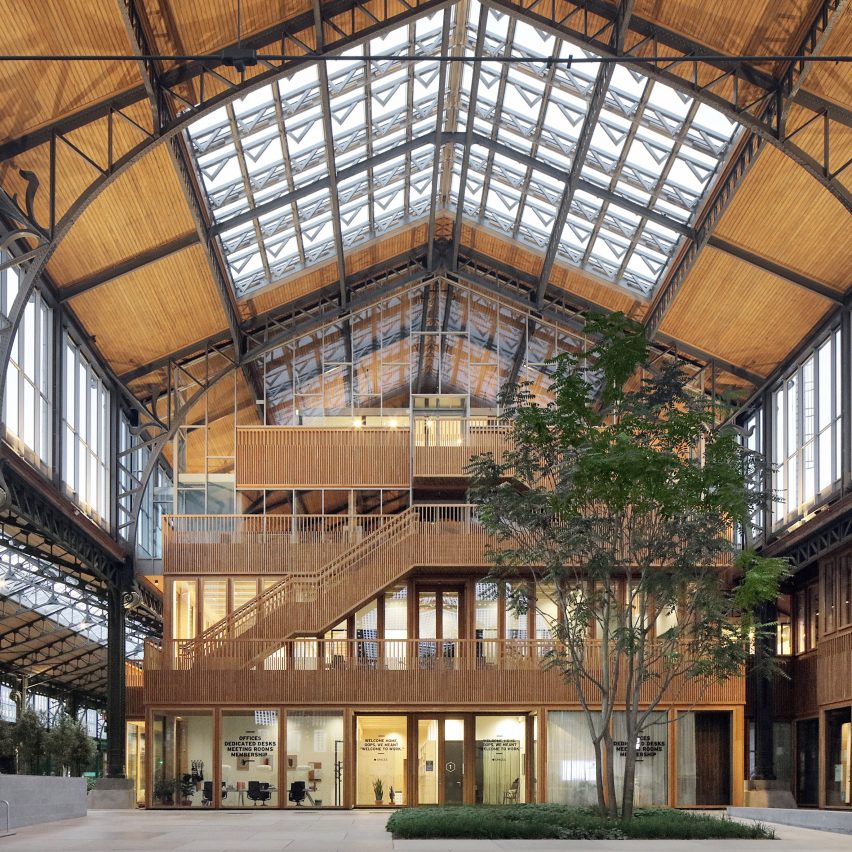
Neutelings Riedijk Architects and Bureau Bouwtechniek have converted a railway station in Brussels into a mixed-use development, which is the largest cross-laminated timber project in Europe.
Within the former 20th-century railway shed the architecture studio has created 12 pavilions from 10,000 cubic metres of timber making it Europe's largest cross-laminated timber (CLT) project according to developer Extensa.
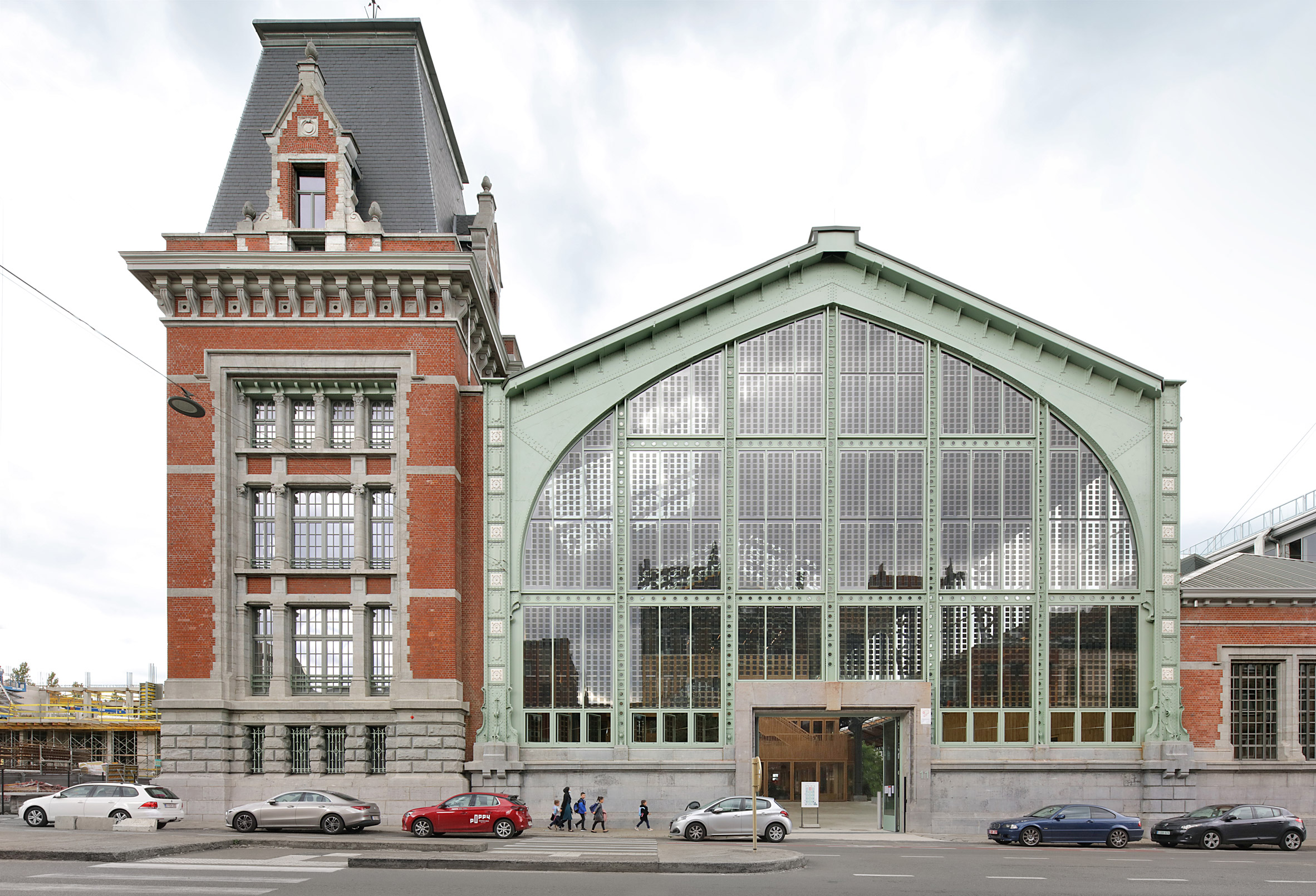
The goods railway sheds near Brussels' docks have been turned into a covered hall filled with shops and offices and space for events, as part of the wider Tour & Taxi development.
A glass and timber roof covers the historic steel struts of Gare Maritime. The CLT volumes below are clad in oak and surrounded by trees and indoor parks.
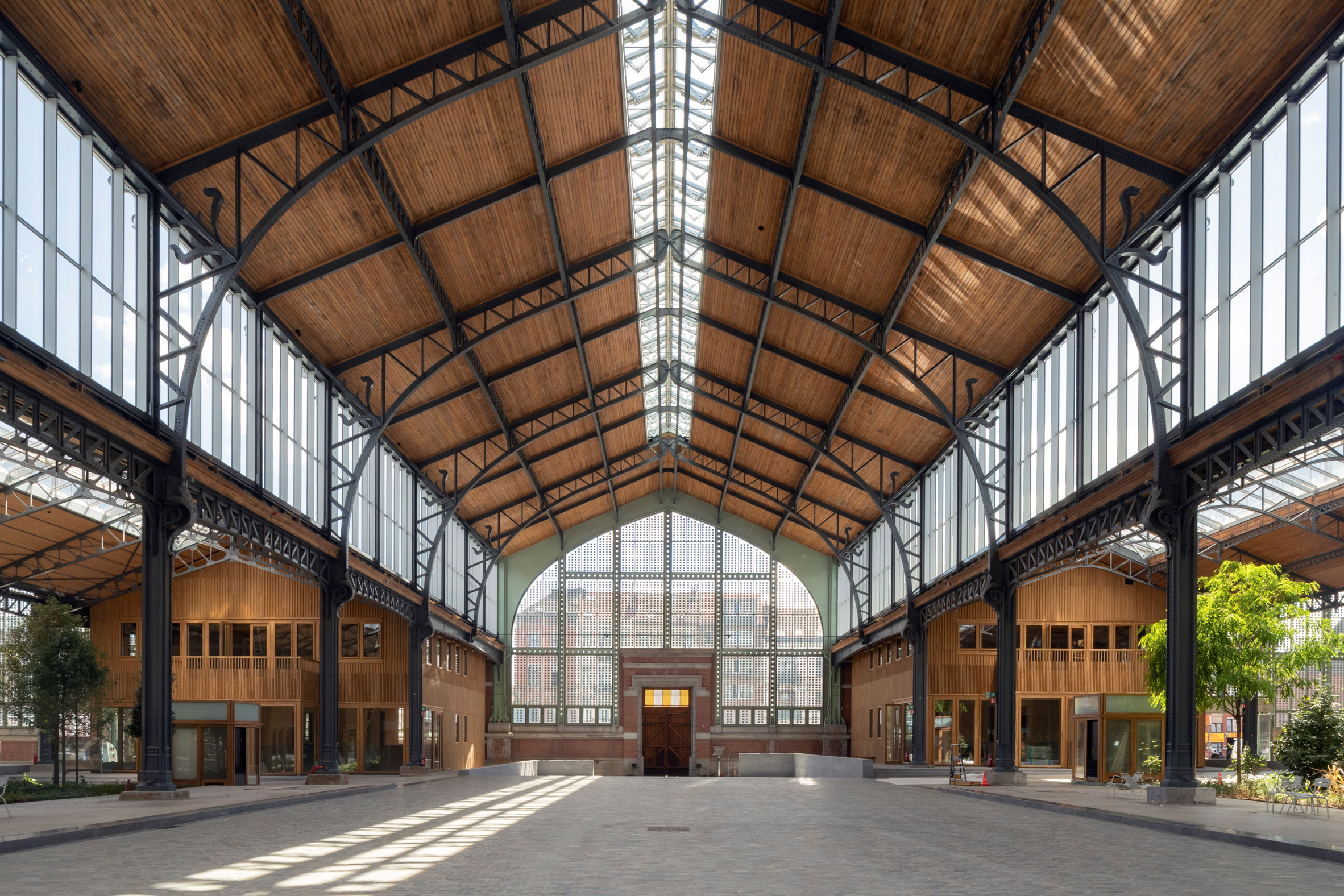
"The twelve pavilions create a new structure of boulevards and street, parks and squares, that follows the existing urban context and the building structure in a natural and logical way," said Neutelings Riedijk Architects co-founder Michiel Riedijk.
Using large amount of CLT was part of the plan to make the development of Gare Maritime as sustainable as possible.
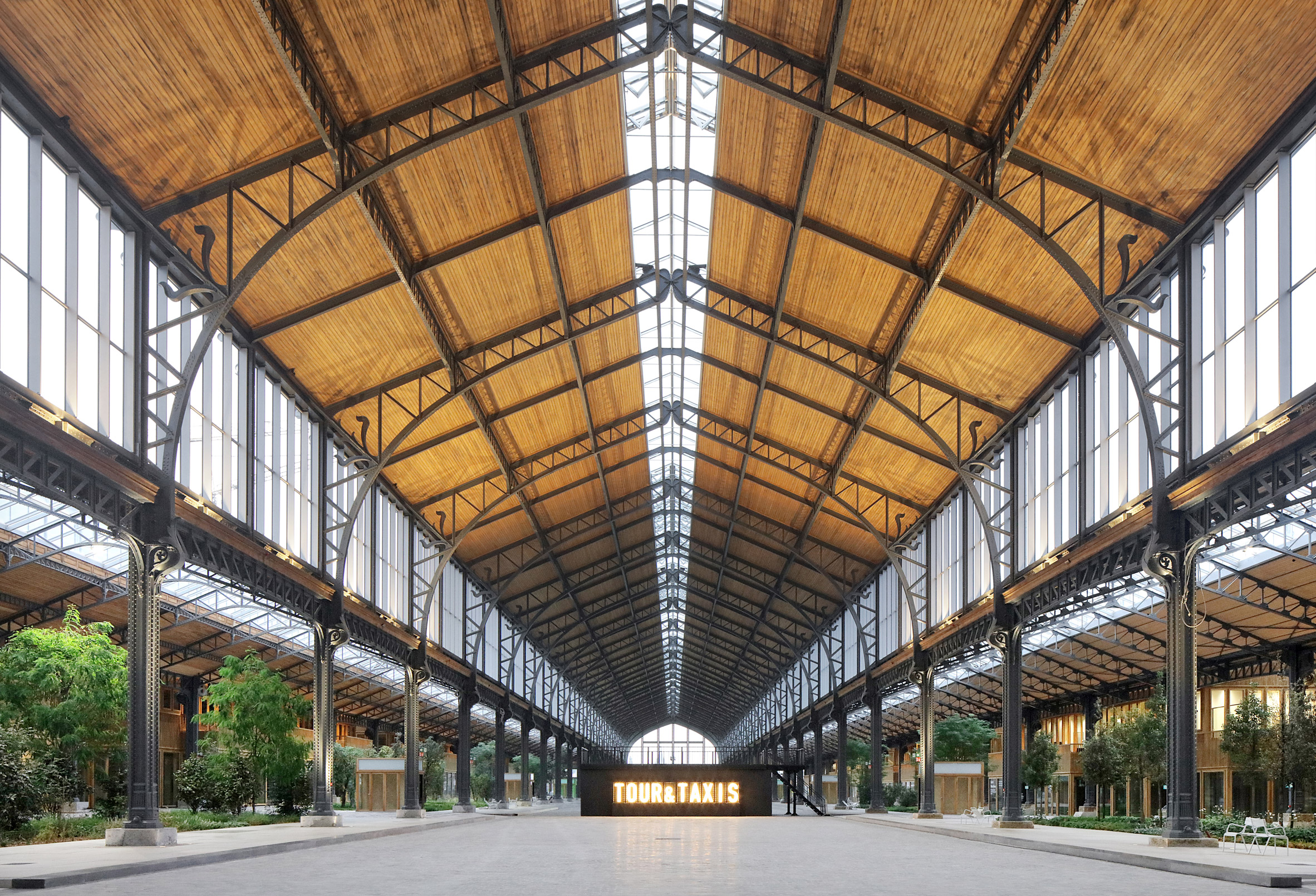
CLT is made by glueing together panels of wood, a renewable material, to create a light yet sturdy construction material. For Gare Maritime, using CLT meant the structures could be prefabricated offsite to cut down construction time.
Neutelings Riedijk Architects followed the principles of the circular economy – where materials are kept in circulation rather than discarded in favour of extracting new raw materials – for the project. The modular CLT structures can be easily taken apart and the panels repurposed at a later date.
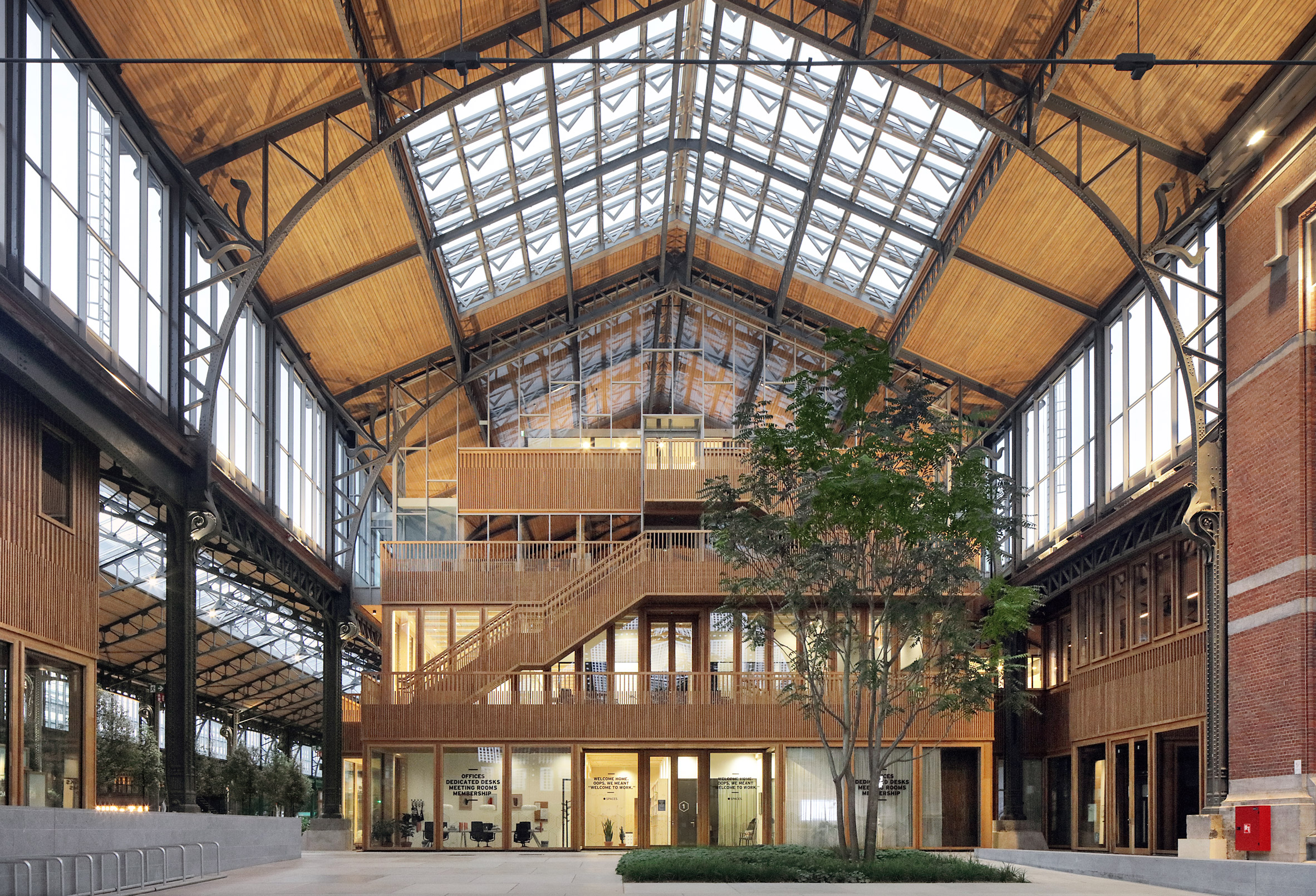
As an adaptive reuse project, Gare Maritime conserves energy and materials by making use of an existing structure instead of demolishing and building an entirely new complex in its place.
Jan de Moffarts Architects, Bureau Bouwtechniek, Ney & Partners and Boydens undertook the restoration of the old railway sheds. The riveted lattice girders and three-hinge trusses have been carefully restored and, in certain places, reinforced.
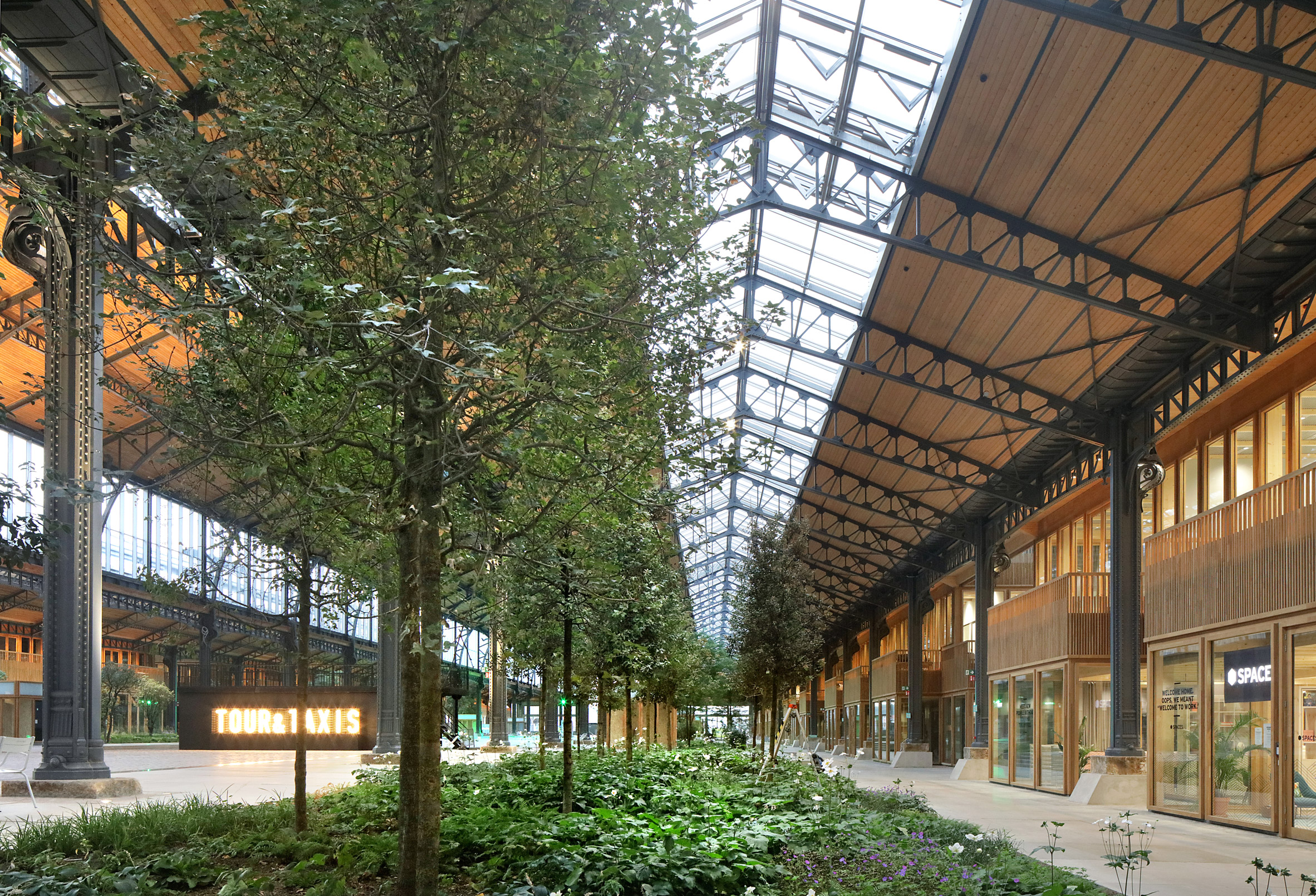
Gare Maritime also runs entirely on non-fossil fuel energy. Solar panels are included in the street-facing facade and a further 17,000 square metres of solar panels are installed on the roof.
Rainwater is collected to water the ten gardens, which are all planted around four different themes – woodland, flowers, grass and fragrance. Eight mosaics by Brussels-based artist Henri Jacobs also decorate the interiors.
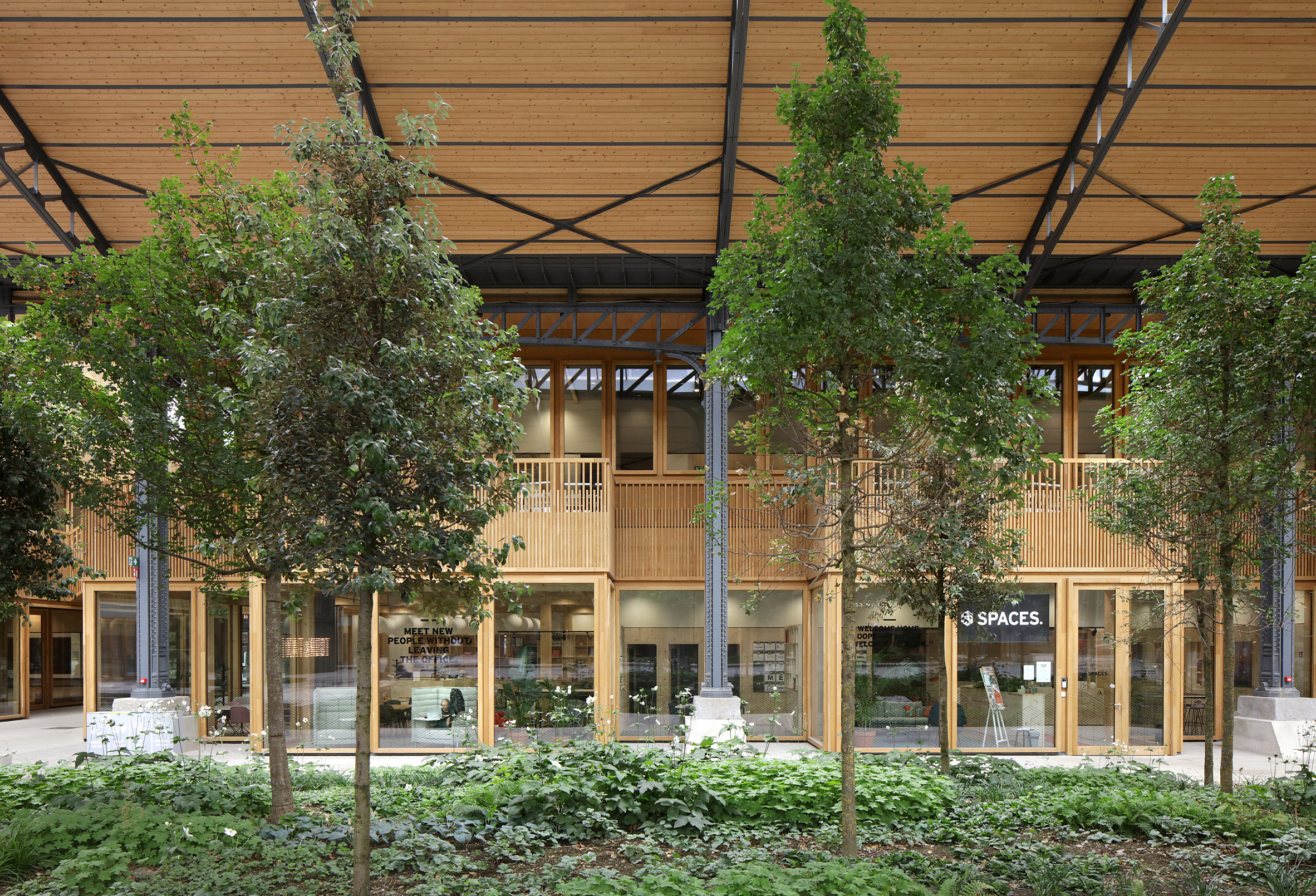
Neutelings Riedijk Architects was founded in 1987 by Willem Jan Neutelings and Michiel Riedijk and is based in Rotterdam.
More major CLT projects include an apartment block in Sweden by CF Møller Architects and a community college in Canada by Dialog.
Photography is by Filip Dujardin unless stated otherwise.
Project credits:
Architects: Neutelings Riedijk Architects, Bureau Bouwtechniek
Architectural design: Neutelings Riedijk Architects
Architectural design team: Michiel Riedijk, Willem Jan Neutelings, Dieter de Vos, Kenny Tang, Alejandro Mosquera Garcia, Alexey Boev, Anselmo Nižić, Frank Venhorst, Pietro Manara
Architectural engineering: Bureau Bouwtechniek
Civil and structural engineering renovation: Ney & Partners BXL
Civil and structural engineering new pavilions: Ney & Partners WOW
MEP: Boydens engineering
Building physics: Boydens engineering
Landscape architect: OMGEVING
Restoration architect: Jan de Moffarts
Interior designer: Neutelings Riedijk Architects
Artist: Henri Jacobs
Cost consultant: Bureau Bouwtechniek
Acoustics: Venac
Fire safety: FPC Risk
Main contractor: MBG
Wood contractor: Züblin
Installations contractor: Cegelec, VMA, NTSA, Van Hoey, IFTech
Project coordination, safety manager: Bopro
The post Gare Maritime in Brussels turned into a timber shopping centre appeared first on Dezeen.
from Dezeen https://ift.tt/2H6SZwI

No comments:
Post a Comment